USING PROPERTIES OF PARALLEL LINES
Subscribe to our ▶️ YouTube channel 🔴 for the latest videos, updates, and tips.
In this section, we are going to see how the properties of parallel lines can be used to verify whether two lines are parallel.
Just
remember that when it comes to proving two lines are parallel, all we have to look at are the angles. Specifically, we want to look for pairs
of :
(i) Corresponding angles
(ii) Alternate interior angles
(iii) Alternate exterior angles, or
(iv) Supplementary angles
Corresponding Angles Converse
If two lines are cut by a transversal so that corresponding angles are congruent, then the lines are parallel.
The diagram given below illustrates this.
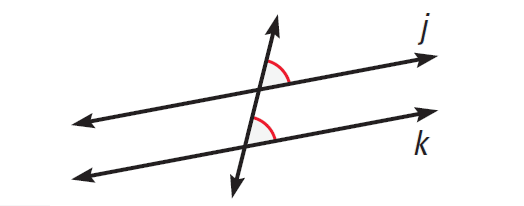
In the diagram above, j||k.
Alternate Interior Angles Converse
If two lines are cut by a transversal so that alternate interior angles are congruent, then the lines are parallel.
The diagram given below illustrates this.
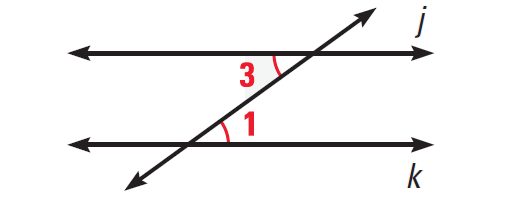
In the diagram above, if ∠1 ≅ ∠3, then j||k.
Consecutive Interior Angles Converse
If two lines are cut by a transversal so that consecutive interior angles are supplementary, then the lines are parallel.
The diagram given below illustrates this.
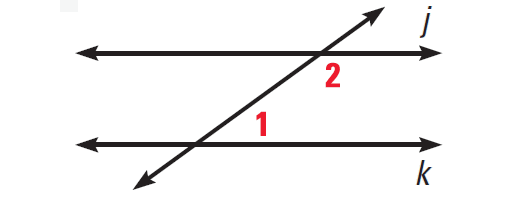
In the diagram above, if ∠1 + ∠2 = 180°, then j||k.
Alternate Interior Angles Converse
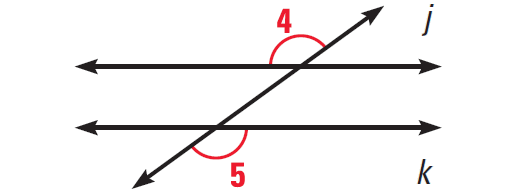
In the diagram above, if ∠4 ≅ ∠5, then j||k.
Transitive Property of Parallel Lines
If two lines are parallel to the same line, then they are parallel to each other.
The diagram given below illustrates this.
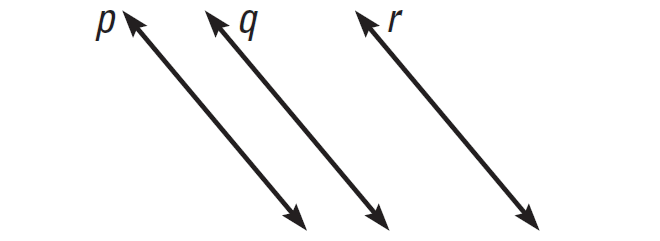
In the figure above, if p||q and q||r, then p||r.
Lines Perpendicular to a Transversal Theorem
In a plane, if two lines are perpendicular to the same line, then they are parallel to each other.
The diagram given below illustrates this.
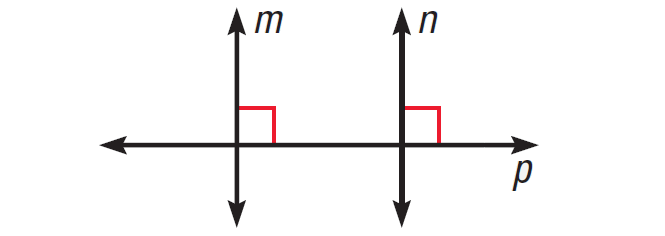
In the figure above, if m ⊥ p and n ⊥ p, then m||n.
Solving Problems Using Properties of Parallel Lines
Problem 1 :
In the diagram given below, lines m, n and k represent three of the oars. If m||n and n||k, then prove m||k.
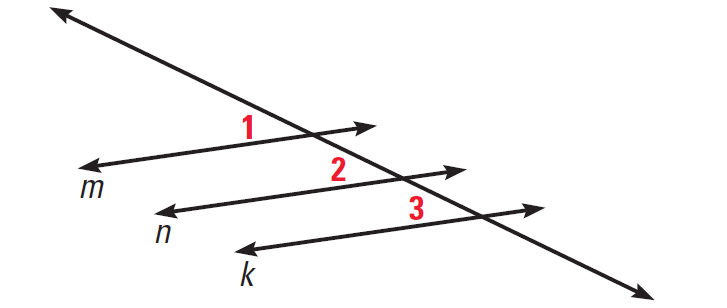
Solution :
|
Statements m||n ∠1 ≅ ∠2 n||k ∠2 ≅ ∠3 ∠1 ≅ ∠3 m||k |
Reasons Given Corresponding angles postulate Given Corresponding angles postulate Transitive property of congruence Corresponding angle converse |
Problem 2 :
In the diagram given below, if ∠1 ≅ ∠2, then prove m||n.
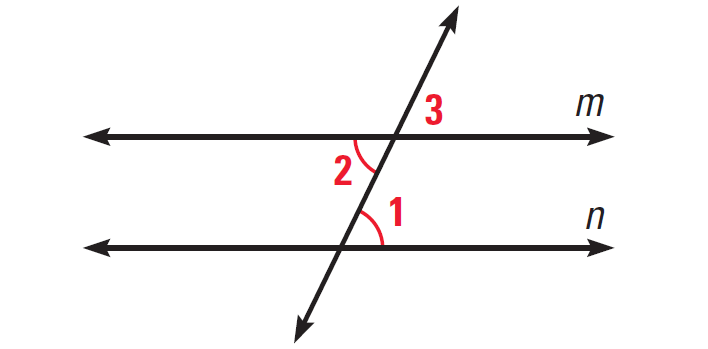
Solution :
|
Statements ∠1 ≅ ∠2 ∠2 ≅ ∠3 ∠1 ≅ ∠3 m||n |
Reasons Given Vertical angles theorem Transitive property of congruence Corresponding angles converse |
Problem 3 :
In the diagram given below, each line is parallel to the next immediate line. Explain why the line K1 is parallel to the line K2.
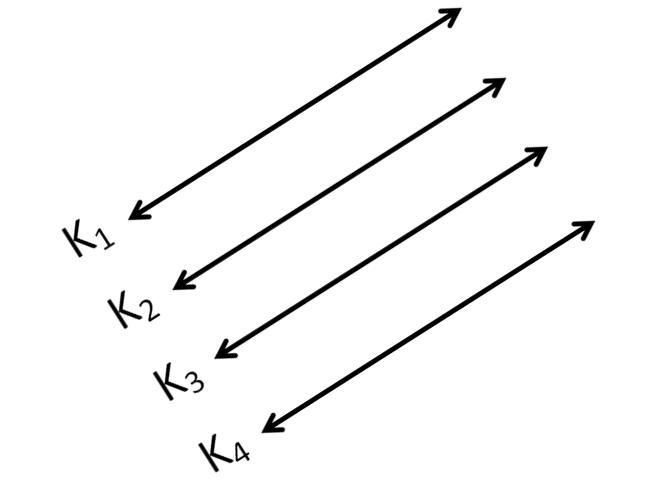
Solution :
We are given that K1||K2 and K2||K3.
By transitive property of parallel lines, K1||K3.
Since K1||K3 and K3||K4, again by transitive property, it follows that K1||K4.
Problem 4 :
In the diagram given below, lines a and b are perpendicular to the line c. Prove that the lines a and b are parallel.
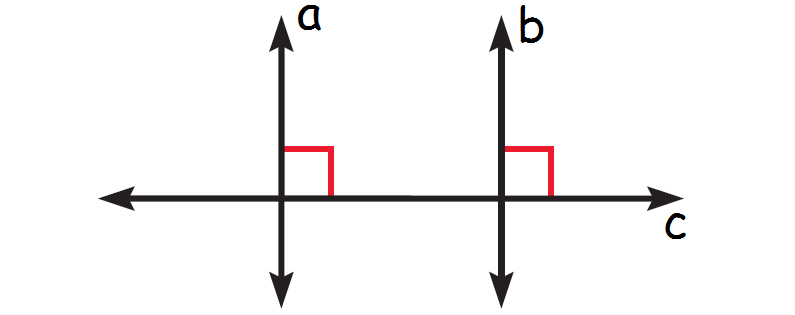
Solution :
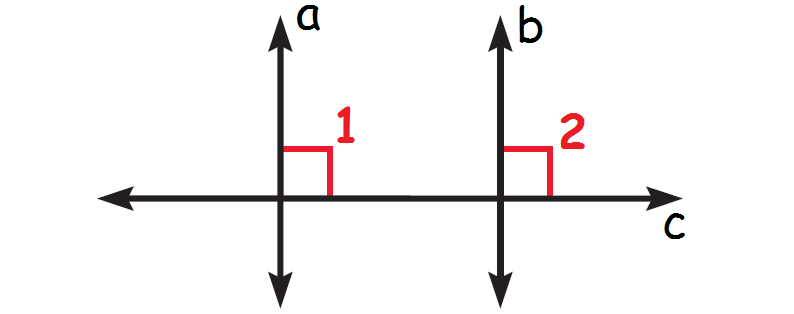
Since the line c cuts both the lines a and b, the line c is transversal. Both the lines a and b are perpendicular to the line c. So, the measure of both ∠1 and ∠2 in the above diagram is 90° and c is transversal to the lines a and b.
That is,
m∠1 = 90°
m∠2 = 90°
By corresponding angles converse, the lines a and b are parallel.
Problem 5 :
In the diagram given below, if ∠4 and ∠5 are supplementary, then prove g||h.
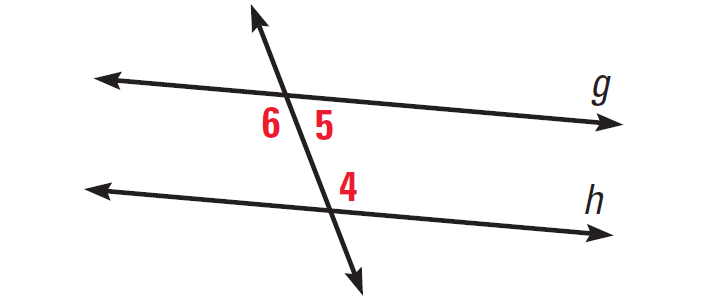
Solution :
We are given that ∠4 and ∠5 are supplementary. By the linear pair postulate, ∠5 and ∠6 are also supplementary, because they form a linear pair. By the congruence supplements theorem, it follows that ∠4 ≅ ∠6. Therefore, by the alternate interior angles converse, g and h are parallel.
Problem 6 :
In the diagram given below, find the value of x that makes j||k.
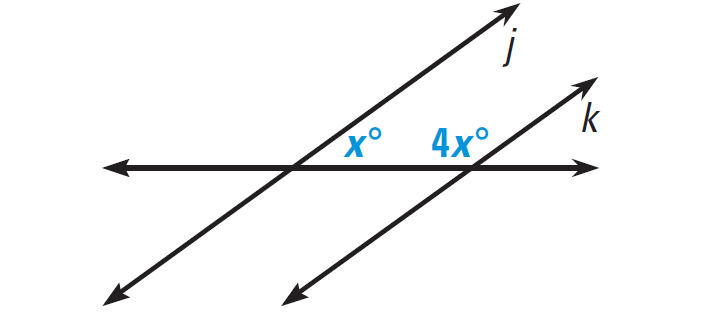
Solution :
Lines j and k will be parallel if the marked angles are supplementary.
x° + 4x° = 180°
5x = 180
x = 36
So, x = 36 makes j||k.
Problem 7 :
If two boats sail at a 45° angle to the wind as shown, and the wind is constant, will their paths ever cross ? Explain.
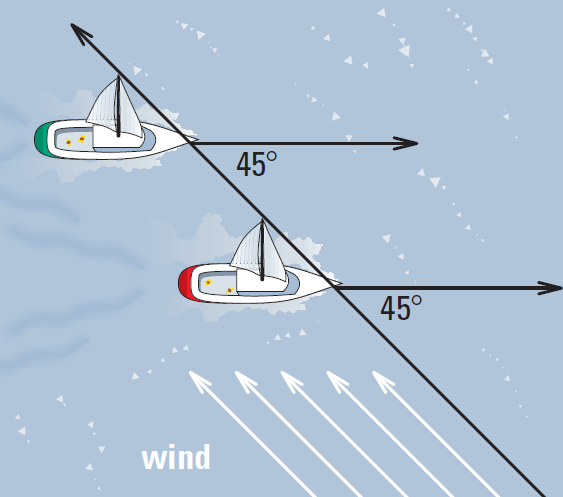
Solution :
Because corresponding angles are congruent, the paths of the boats are parallel. Parallel lines do not intersect. So the paths of the boats will never cross.
Problem 8 :
In the diagram given below, decide which rays are parallel.
(i) Is EB parallel to HD?
(ii) Is EA parallel to HC?
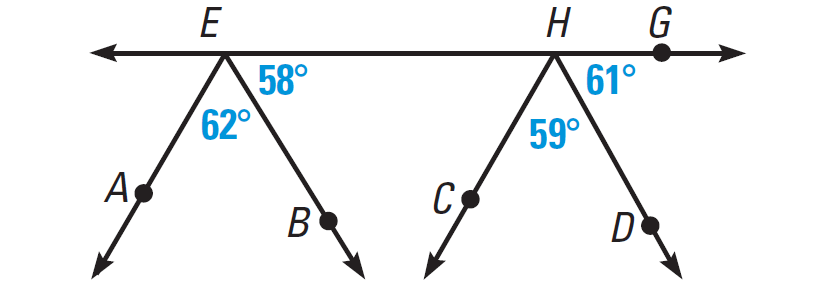
Solution (i) :
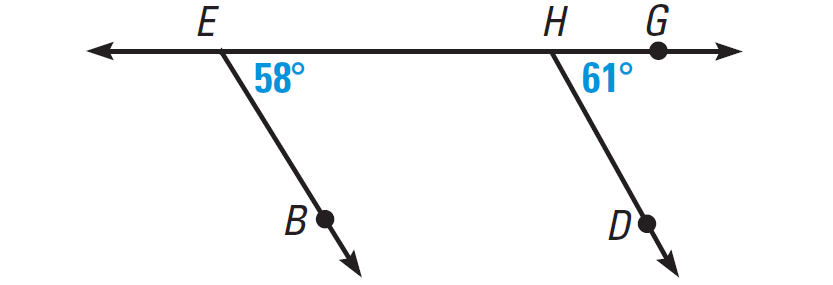
m∠BEH = 58°
m∠DHG = 61°
∠BEH and ∠DHG are corresponding angles, but they are not congruent. So EB and HD are not parallel.
Solution (ii) :
m∠AEH = 62° + 58° = 120°
m∠CHG = 59° + 61° = 120°
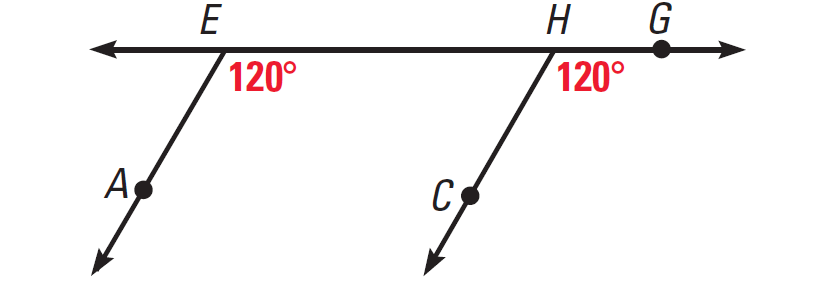
∠AEH and ∠CHG are congruent corresponding angles. So AE and CH are parallel.
Subscribe to our ▶️ YouTube channel 🔴 for the latest videos, updates, and tips.
Kindly mail your feedback to v4formath@gmail.com
We always appreciate your feedback.
©All rights reserved. onlinemath4all.com
Recent Articles
-
10 Hard SAT Math Questions (Part - 38)
Dec 08, 25 12:12 AM
10 Hard SAT Math Questions (Part - 38) -
SAT Math Practice
Dec 05, 25 04:04 AM
SAT Math Practice - Different Topics - Concept - Formulas - Example problems with step by step explanation -
10 Hard SAT Math Questions (Part - 37)
Dec 03, 25 07:02 AM
10 Hard SAT Math Questions (Part - 37)


